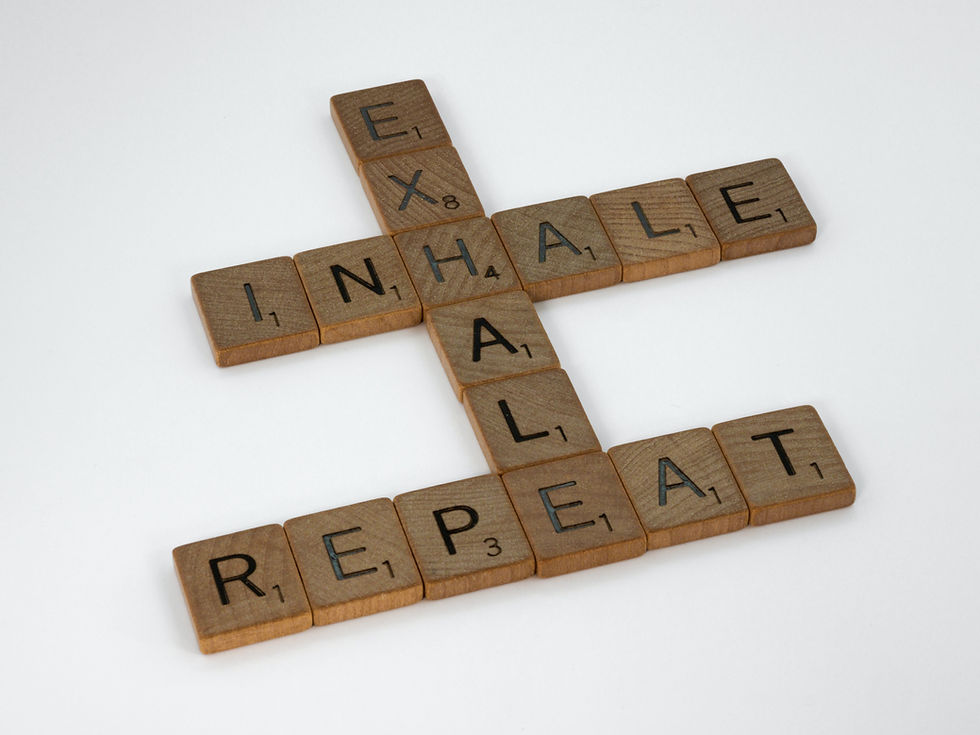The Neuroscience of Breathwork: Harnessing the Power of Breath for Stress Management
- Psychology360

- Jun 11, 2024
- 4 min read
In today's fast-paced work environment, managing stress effectively is crucial for our mental and physical health. Breathwork, which involves consciously controlling our breathing patterns, has gained recognition as a powerful tool for reducing stress, easing anxiety, calming the brain, and boosting our cognitive performance. Let's explore how breathwork can make a real difference in our daily lives and at work, backed by the latest neuroscience (of course)! I even recommend some breathe work in workshops to allow for better learning and retention.

What is Breathwork?
Breathwork includes a range of techniques like deep diaphragmatic breathing, box breathing, and alternate nostril breathing. While these practices have ancient roots, modern science is now validating their benefits for our nervous system and brain. I am a firm believer in science backed tools.
How Breathwork Helps Reduce Anxiety
Anxiety often triggers our body's "fight or flight" response, causing symptoms like increased heart rate and elevated blood pressure. When experienced chronically, these symptoms can take a toll on our health. They also reduce our problem solving and creative thought as we cannot access our pre-frontal cortex or CEO functions when in a stressed state.
How It Works
Activating the Calm Response: Deep diaphragmatic breathing activates the parasympathetic nervous system (PNS), which promotes relaxation and counters the stress-induced activation of the sympathetic nervous system (SNS).
Stimulating the Vagus Nerve: The vagus nerve, a key part of the PNS, helps regulate heart rate and induce calm. Slow, deep breaths stimulate this nerve, enhancing its calming effects.
Lowering Stress Hormones: Chronic anxiety often leads to elevated cortisol levels. Regular breathwork can help lower cortisol, reducing the overall stress load on our bodies.

Calming the Brain
Chronic stress affects several brain regions, including the amygdala (the fear center) and the prefrontal cortex (responsible for decision-making and self-control). Breathwork helps balance these areas.
Brain Benefits
Soothing the Amygdala: Breathwork reduces activity in the amygdala, lessening the intensity of stress-related emotional responses and preventing long-term negative changes in the brain.
Boosting Prefrontal Cortex Function: By promoting relaxation, breathwork enhances the functioning of the prefrontal cortex, which is crucial for effective problem-solving and decision-making.
Supporting the Hippocampus: The hippocampus, which is vital for memory and emotional regulation, can suffer from chronic stress. Breathwork helps protect this area by reducing stress hormones and encouraging the growth of new neurons.

Improving Problem-Solving and Performance at Work
By managing stress and calming the brain, breathwork can significantly improve our cognitive abilities and productivity at work.
Cognitive Enhancements
Better Focus and Concentration: Reducing stress and anxiety through breathwork allows us to maintain better focus and concentration, enhancing our productivity.
Increased Creativity: A relaxed brain is more capable of creative thinking. Breathwork helps create the mental space needed for generating new ideas and solutions.
Improved Decision-Making: With a well-regulated prefrontal cortex, we can make more rational and well-considered decisions, reducing impulsive actions driven by stress.

2 Techniques I recommend:

Summary: 4-7-8 breathing is a simple technique that involves inhaling for 4 seconds, holding the breath for 7 seconds, and exhaling for 8 seconds. This pattern is repeated
several times, promoting relaxation and reducing stress by calming the nervous system.
How It Works: By extending the exhale, 4-7-8 breathing stimulates the body's parasympathetic nervous system (PNS), triggering a relaxation response. It helps regulate breathing, lower heart rate, and alleviate anxiety.
Benefits: This technique is quick, easy to learn, and can be practiced almost anywhere. It's particularly helpful for promoting sleep, managing stress, and reducing anxiety levels.

Summary: Box breathing, also known as square breathing, involves inhaling, holding, exhaling, and holding the breath for equal counts, typically in a square pattern. For example, inhale for 4 counts, hold for 4 counts, exhale for 4 counts, and hold for 4 counts before repeating.
How It Works: Box breathing helps regulate the breath and calm the nervous system by balancing the ratio of inhale, hold, exhale, and hold phases. This rhythmic pattern induces relaxation and promotes a sense of control over breathing.
Benefits: Box breathing is effective for reducing stress, enhancing focus, and improving emotional regulation. It can be used as a quick relaxation tool during stressful situations or as part of a daily mindfulness practice.
Applying Breathwork at Work
Daily Practice: Incorporating short breathwork sessions into our daily routine can provide lasting benefits. Techniques like box breathing (inhaling for four counts, holding for four counts, exhaling for four counts, and holding again for four counts) can be easily practiced during work hours. I love that I can slip away from a stressful meeting and down regulate myself in an efficient and subtle way.
Upskill and Training: Organizations can offer workshops and training sessions on breathwork techniques to give employees practical tools for stress management. There are a bunch of great instagram accounts and newsletters. The book Breathe by James Nestor is a favourite of mine.
Creating a Supportive Environment: Fostering a workplace culture that values mental health and encourages stress-reduction practices can greatly enhance overall employee well-being and performance.

Conclusion
Breathwork is an accessible, effective, and scientifically backed method for managing stress, reducing anxiety, calming the brain, and improving cognitive performance. By understanding how these practices work, we can harness the power of breath to create a healthier, more productive work environment. Regular breathwork can lead to profound improvements in our mental well-being and efficiency, making it a valuable addition to any stress management toolkit.
Yours Sincerely, The Humble Humanologist






Comments